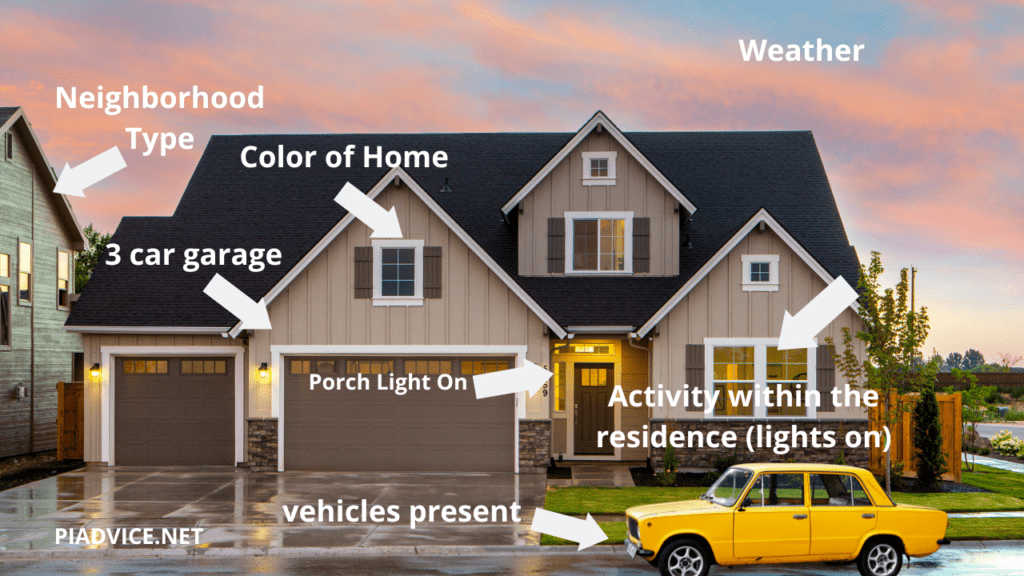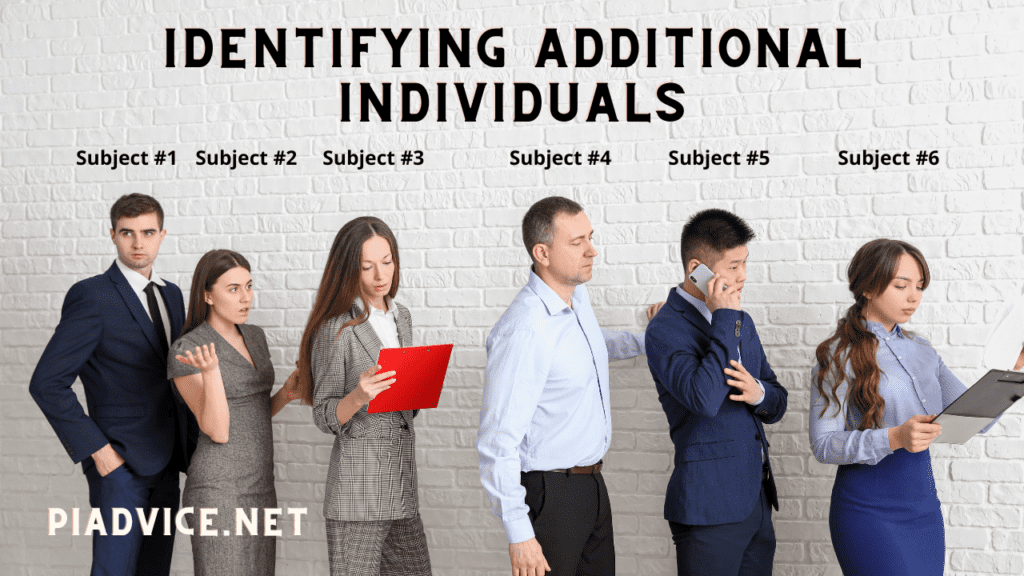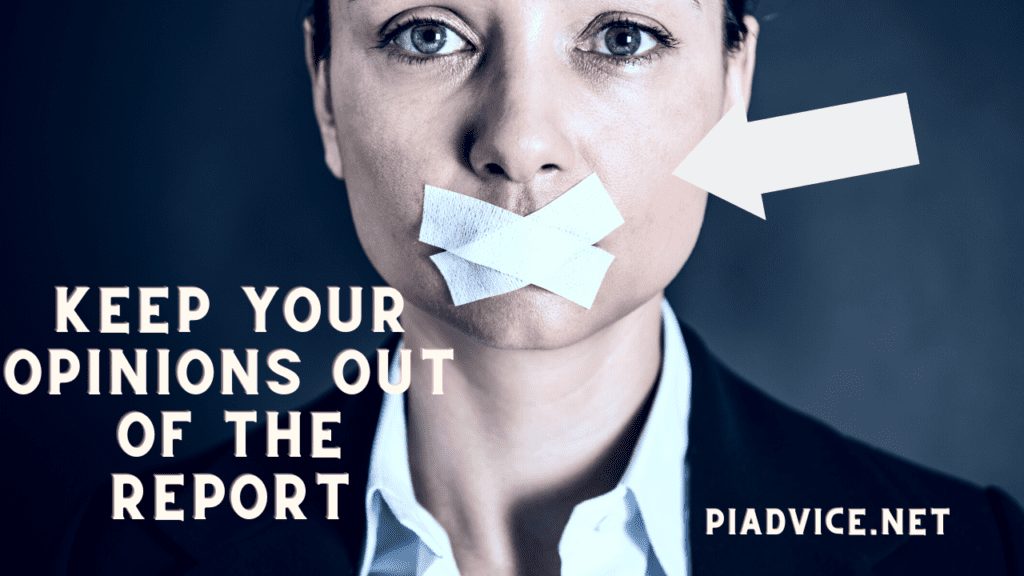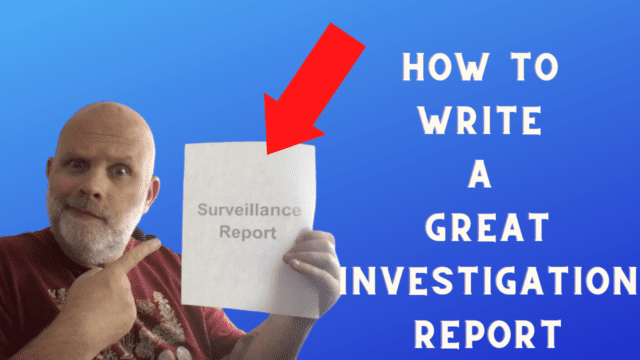A well-written private investigation surveillance report is incredibly important as it describes what was video documented, what was not video documented, efforts the investigator made, and even explains why the investigator may have not done something. As you read on, you will learn the fundamentals of how to write a private investigator surveillance report the right way.
Contents [show]
Using the Proper Grammer and Spelling Words Correctly in Your Surveillance Report
A fundamental ability every private investigator must have is the ability to spell words correctly (or have them corrected) and to use proper grammar in investigation and surveillance reports.
If you work for a private investigation company, you will likely have an editor that reviews your surveillance report and summary before the final product is sent to the client. The editor will look for spelling errors and sentences that don’t make sense.
The editor will usually inform the investigator of any changes that were made as well as that is the investigator’s work product. Editors will not change anything in regard to what the investigator observed.
If you don’t have an editor then you may want to have a second pair of eyes to review your report before it reaches the client.
Generally speaking, most word processing programs like Microsoft Word, and Google Docs have some spell check features built-in within them however they don’t catch all the grammatical errors.
Because of this, I strongly recommend using a program called Grammarly. I have used this program on and off for years. There is a free version that will help you a great deal in catching errors but there is also a paid version as well that is next level.
Good Surveillance Reports are Descriptive
The type of description in a private investigator surveillance report will be determined by the type of investigation you are conducting. If you are conducting an insurance surveillance investigation, then the movements of the claimant or insured will be important to the client.
If you are conducting infidelity surveillance on the spouse of your client, then describing that the subject is limping (unless somehow relevant) would be of little use to the client and would be out of place.
So what might be important things to be descriptive of?

Describe the Subject’s Residence
Generally speaking on the first day of a surveillance assignment it is important to describe the residence of the subject and the surrounding area.
- Describe the Type of Residence (one or two-story?)
- What type of neighborhood is it?
- What is the Color of the Residence?
- Does the Residence Have a Garage? Two, Three, Four Car Garage?
- How Many Vehicles Are at the Residence?
- Are There Recreational Vehicles Present? (Boat, RV, Jet Ski, Motorcycle)
- Is the Porch Light on Upon Arrival?
- Is the Front Yard Well Kept?
- Is the Neighborhood Rural, Urban, or Suburban?
Describe Vehicles Related to the Surveillance Assignment
Upon arrival at the subject’s residence, you will want to note all vehicles associated with the residence. This will include the make, model, color, identifying marks, approximately model year, and license plate number.
As the surveillance day continues you will document any vehicles that arrive at the residence as well as any vehicle that may be associated with the surveillance investigation.
Describe Individuals Associated with the Subject of the Surveillance Investigation
During the surveillance assignment, you will likely see other individuals exiting the residence. You will want to describe these individuals the best you can. An example would be something like this:
“An unidentified Caucasian female approximately 40 years of age with shoulder-length blonde hair exited the residence and departed the area in the aforementioned Honda Civic as the driver.”
A description that may also be acceptable would be a sentence like this:
A Caucasian female approximately 40 years of age and believed to be the subject’s wife and hereafter referred to as such, exited the residence and departed the area in the aforementioned Honda Civic as the driver.

Identify Individuals The Are Repeatedly Mentioned in a Report
Some individuals are observed repeatedly throughout the surveillance day. In those situations, you can identify them as something specific so the report is easy for the reader to understand.
As previously mentioned above I stated the woman was believed to be the subject’s wife and would thereafter be referred to as such.
From that moment on, I would use “The. Subject’s Wife” to identify the woman throughout the report.
“The Subject’s wife returned to the Subject’s residence in the Honda Civic and entered the residence out of view”
If it isn’t Obvious Who They Are
If you aren’t sure who they are and you have multiple people individuals in your report you can identify them as Individual #1 or something to that effect in your report. Here is an example:
“An unidentified Caucasian male hereafter referred to as Individual #1, arrived at the Subject’s residence in a 2000’s model, black Dodge Ram Truck bearing Colorado license plate number 345HBB and entered the residence out of view.”
“Individual #1 exited the Subject’s residence and departed the area in the aforementioned Dodge Ram as the driver.”
Describing Vehicles
The proper way to describe vehicles is modeled above. This order is a good way of presenting this information in a surveillance Report:
- Approximate Year of the Vehicle
- Color of the Vehicle
- Make of the Vehicle (Ford, Dodge, Toyota)
- Model of the Vehicle (Taurus, Durango, Sienna)
- State of Plate and Plate Number
Describing How the Claimant or Insured Moves
If a claimant has an injury, the investigator should note any obvious limping or restrictive movement by the claimant including any orthopedic devices the claimant may be using.
If the claimant or insured is dealing with something cognitive or something like depression, responses or facial expressions may be worth noting in the report.
Describe the Subject of Your Investigation
Upon first seeing the subject of your investigation you will need to describe the subject. Details including approximate height, approximate weight, facial hair, approximate age, ethnicity, hair color, and clothing should be documented.
Write in Past Tense or Present Past Tense
In your report, as you are detailing what took place, you will use either past tense or present past tense.
Past tense is in reference to something like this:
“The claimant was observed as we walked, jumped, and sat on a bench.”
Present past tense would be written like this:
“The claimant was documented walking, jumping, and sitting on a bench.”

Don’t Add Your Opinions Within Your Report Unless The Client Ask For it
Your job as a surveillance investigator is to document what you observe and what is actually documented on video. I have even created a private investigator surveillance log book to help you document activity in an organized manner.
Your opinion, generally speaking, is not what the client is paying for in your report.
Here is an example of an investigator inserting an opinion.
“The claimant was observed exiting his residence and was then documented walking to his vehicle, entering as the driver, and then departing the area as the driver. The claimant was observed walking with a limp however the investigator believes the claimant was faking the limp. Mobile surveillance was then initiated.”
The investigator is not a doctor and should not be commenting on the claimant’s injury. Comments like that would be inappropriate and may portray bias against the claimant.
Good investigators are unbiased in their investigative efforts. Document what you observe whether it is obtained via video or without video documentation.
If you would like to know what belongs in a private investigator surveillance report I have written and podcasted about it.
Use these guidelines and you will be well on your way to writing clear and concise reports that will be easy for your client to understand what happened on any given surveillance day.


